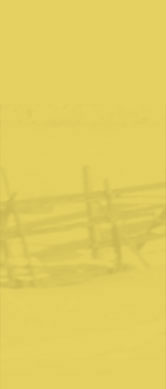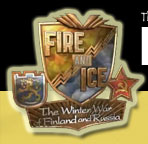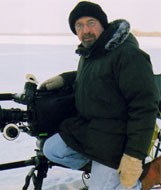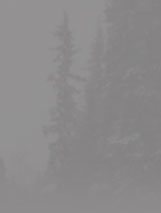

Valde Hämäläinen
Finnish
-AT Gun platoon leader
Battle
of Summa
January 1 – 4, 1940
In the morning we left our camp area and moved on to Viipuri Road. Our final destination is Summa village. We ended up having a lot of breaks during the march which led to a lot of shouting and curses from our superiors. Harnessing in the second squad was almost completely broken. Weather was favorable for the march – thermometer showed zero degrees Celsius, it was snowing heavily. There was no danger of air raid and we felt as safe as one could wish during day march to the front.
During the night we arrived at the defensive line that was located on the northern edge of Summa village field. This was the heavily advertised Mannerheim Line then. Here enemy had already made many attempts to break through our lines with support of strong armor units. The trenches of our infantry were towards the middle of the field; there was also a stone anti-tank obstacle there.
There was a MG bunker next to us, its number was seven. Some hundred meters north from it was another large concrete bunker for accommodation, No. 12. There were no other strong bunkers in the area at all.
We were accommodated in a small wooden dugout at the forest edge. The roof of the bunker was made from three layers of relatively thin logs. There was little soil on top of the logs and a weak stone layer. It looked rather light and unreliable. How on earth this will stand a hit of even a 3 inch shell? If its fuse is set on contact explosion, it would definitely go through.
The second AT-gun with its crew was stationed in another bunker in about 1 kilometer from us. Their bunker was larger than ours and there was some other squad stationed in it. The second gun had a firing position more to the west from us.
Our dugout was quite close to the highway, along which the enemy has been trying to break through with support of tanks. The dugout could accommodate 15 men. The stove is in the corner and the dugout is in all respects quite cozy. It is quite chilly down in the bunker next to the floor. It is hot as a sauna on the second level of bunk beds. Sweat covers forehead even if one takes almost all the clothes off.
In our thoughts we are comparing our dugout to the bunker No. 7, our neighbor. The bunker has roof and walls made of one meter thick concrete, with one meter of soil and stones on top. The door is strong, made of steel. We have some sort of jealousy in our minds: you are there in all safety while we are sitting here in a weak hole in the ground.
January 3-8, 1940
We got about a week of rather peaceful time here at the front. Small shells were of course raining every day but it has already begun to feel as a very unimportant thing.
During the first night I ended up running around the sector in darkness with a guide who knew all the paths that cross the forest in all directions. I had to remember, which path goes where, which unit is at which path, where the mine fields are, which are going to the neighbor units and so on. When I was running around all those paths in moonlight, I thought I would never remember anything about them. But it seems that when you really have to learn something, you will finally learn it.
Minefields make a lot of paths dangerous. Mines are planted on both sides of the paths, sometimes they are right in the center of a path. One just has to know and remember where they are. Everything has to be kept in mind. Despite our cautiousness some men make mistakes.
Our lifestyle changes completely. Day is for sleeping, night is for staying awake and working. During the day the area looks empty and quiet, but when darkness falls, there are more men on the move than at a marketplace in Joensuu. One cannot make anything before midnight as the enemy’s artillery is firing diligently and in order to avoid losses men are staying inside. It is quieter after midnight and this is when we are doing our work.
We place our gun at the wall of the bunker waiting for prey, but it had just snowed, snow layer is thick and it prevents tanks from moving in front of us.
Enemy’s air force is remembering us all the time one way or another. There are propaganda leaflets dropped next to the door of our dugout. It reads in large letters: FINNISH SOLDIERS! SAVE YOUR LIVES! FLEE FROM MANNERHEIM LINE. NO ONE WILL REMAIN ALIVE AT THAT LINE.
It seems that the whole thing is only making all my guys laugh. Some one is asking, do they actually mean that no enemy’s soldier remains alive at Mannerheim line. Well, it is their fault after all. Why did they keep coming here if they are so afraid of death?
January 9, 1940
We started digging a trench for our gun in early morning light. We made the trench quickly by planting a mine and detonating it. It seems like the enemy saw the explosion as they immediately started to fire shrapnel at our work area in a twinkle of an eye. They only frustrated our work.
Soil is extremely hard to dig. Countless feet have stepped on this ground during the extraordinary maneuvers. When frosts came, the ground froze deeper than usual.
January 10, 1940
We continued our work. It was already daylight when we detonated the second mine. Shrapnel started to explode around immediately but we did not stop our work. Shrapnel was then replaced by high-explosive shells which started to fall so near to us in about an hour that we decided to continue watching the show from the entrance to the concrete bunker. When they finished the bombardment, we went “home”.
I told the second gun crew that I would come in order to inspect their rifles at 15:00, and ordered men to line up next to the door of their dugout in trench. It was so dark in their dugout that one could not make any weapons inspections there.
Preciseness is a virtue and an officer should show good example to his subordinates. The order had to be fulfilled precisely – also on my side. I wanted to be at the spot exactly at 15:00 and start the inspection. I still had about one hour time before I had to leave and I stretched myself on a bunk bed in our dugout.
I fell asleep and woke up too late. It was quite rare for me, as usually I could not sleep well, even in civil life. I could not fall asleep, especially in daytime.
When I woke up I was already 10 minutes late. “Well, what sort of an example am I! I order an inspection and am late myself,” I thought.
I ran toward the second gun. There were many sleds with blood-covered men in then coming against me. I did not pay any attention to that as it was a common view already. I was still amazed to see so many dead and wounded as the day had been quiet and artillery fired rarely.
When I arrived at the dugout of the second gun, the picture became clear. Men were gathered waiting outside the dugout, sitting on a bench. It was not wise to stand outdoors. Shrapnel flew in at exactly 15:00 and exploded inside the trench at the door of the dugout. We would have all been standing right there if I were not late. But even then the shell made a lot of destruction; the door of the dugout looked as if someone fired a shotgun at it. It was full of holes; they were so big that one could put fingers in them. The shrapnel killed one man that was sitting on the bench. Aarne Kajanne became the first one in our platoon whose life was sacrificed to the idol of war and started the list of KIAs that grew longer and longer later.
The shrapnel also hit the guys from the other unit that were resting in the bunkers. Crosses had to be drawn next to their names in unit lists. Some men were also wounded. The survivors in the dugout complained that the shrapnel flew in from the rear. This meant that our own artillery fired shrapnel too short. Who knows, was it really so?
I felt God’s protection over me after all this. I do believe that the Highest One prevented me from coming to the place on time and ending up in jaws of death together with my men.
January 11, 1940
Enemy fired all midday at our gun position next to the concrete bunker. He did not achieve anything in this bombardment.
Later we added a camouflage net over the position of our gun so that enemy’s artillery observer planes would not spot it. During our camouflaging effort we had a chance to see a special performance that took place in some 100 meters from us.
One of our guys was bringing hot food on his turn at noon. He was quietly walking toward our dugout with thermos in hand.
The largest part of his trip was over open terrain in all sight for enemy’s artillery. There were not at all many trees intact along his way. An enemy’s fighter appeared over our pea soup bearer on his way back. The pilot spotted the lone soldier and apparently decided to end his journey for good. The fighter made a sharp turn and started to decrease altitude.
“Now that airplane
spotted our food bearer. How will it end?”
“He should run. If he walks that slowly, he will definitely kick the
bucket.”
The fighter made even a lower dive and opened MG fire at the bearer.
“He missed, but what
is wrong with that guy that he does not duck for cover!”
“ Where would he duck for cover in an open terrain?”
The fighter made another dive, but they guy just kept on walking as nothing had happened.
“Is it… No,
I cannot see from here who that is. Whose turn it was today to
bring us food?“
“ Is it Loven or Saura? It is impossible to see clearly from here.
It could be someone else, too.”
“Look at that damn guy – he pretends that he does not notice
the whole thing.”
“No, he should not run with soup. He would spill it.”
“Isn’t one human life more expensive than a bucketful of soup?”
“Yes it is so but that guy just does not get hit no matter how hard
the pilot tries.”
“That guy is crazy; he does not even speed up!”
“I would at least leave the bucket on the path and throw myself under
some tree.”
“Would you really? I think that you would walk calmly just like that
guy. I know you well already.”
The food bearer continued to walk with slow step towards the dugout thermos in hand. The fighter was circling above him all the 400 meters of his trip, made several dives and fired his MGs. I guess the pilot was pissed off that not only he had missed his target, but the target did not even get to run or walk with faster step.
When the bearer finally arrived at the bunker, he said:
“Yes he was a really bad shooter – he
did not get me even from a machine-gun although he was flying so
close.”
“Yes we saw you and were worried about you. Don’t you remember
one guy was killed like that? You should have at least run.”
“No, it was not necessary. Don’t you remember what they told
us when we were leaving for the front?”
“ What was it?”
“That not everyone dies in the war, but in civil life everyone dies.”
January 12, 1940
This day was really full of shell rain. Enemy’s artillery started bombardment of our gun positions at around 9:00. The bombardment continued it till 16:00 and sometimes one could not discern individual explosions. I would estimate that enemy fired around 150 heavy shells per hour at area of half hectare for seven hours.
We spent entire time of bombardment in our bunker, in some 50 meters from our gun. Only observers were outside in the area under bombardment. No one looked scared, no one even got wounded. The air nevertheless was almost constantly full of whizzing splinters. Some of them were sharp as a blade. Another source of danger was the frozen masses of soil that were thrown in the air by explosions and then again fell on the ground. Again one could not help thinking about God’s protection.
It felt quite bold to be in such a weak bunker during a bombardment when heavy shells were falling all around. We knew well that even if a single grenade falls on roof of our bunker, we were all dead. It had happened in this sector before – a heavy shell hit a dugout and only pieces of snow coveralls were left of 16 men. I cannot help admiring the calmness and peacefulness with which my men took the bombardment.
Lakstedt said that he would peek outside to see what the bigger world looked like outside. He stepped out of the door but the next moment he came back even faster than he came out, shaking his head and had to sit down on the floor of our dugout. Air pressure shell-shocked him. It was “high pressure weather” outside and no forecast of weather changing. Such an unusual comeback made everyone, including Lakstedt, laugh.
After the bombardment was finally over, we went out to see if there was anything at all left of our gun. We saw that at least the landscape had changed. Snow was covered with dirt almost everywhere. Shell craters were located next to one another. There was a huge crater from a shell or air bomb right next to our dugout. When I jumped into it, my head could not be seen above its edges. There were two more huge craters next to the concrete bunker. Smaller craters dotted a large area. There was some sort of forest protecting us from enemy’s sight before the bombardment, but all that was left of it was just pieces of trees lying here and there on the ground. It looked as if enemy had really decided to destroy all our positions. They have gone through a lot of trouble for us, but they do seem to bother shooting artillery even at an individual soldier appearing on our side. They definitely did not have the same shortage of ammo as we had over here.
Our gun was completely intact under pieces of some tree. The area around it does not look what it used to be before. We were to shift our gun to another position during the night. If they continue the bombardment with same hatred as they did today, it might well go badly for our weapon. We should not sacrifice in vain the expensive guns of a poor country.
Our artillery revenged the enemy during the evening quite intensively. Where did they get all that ammo?





